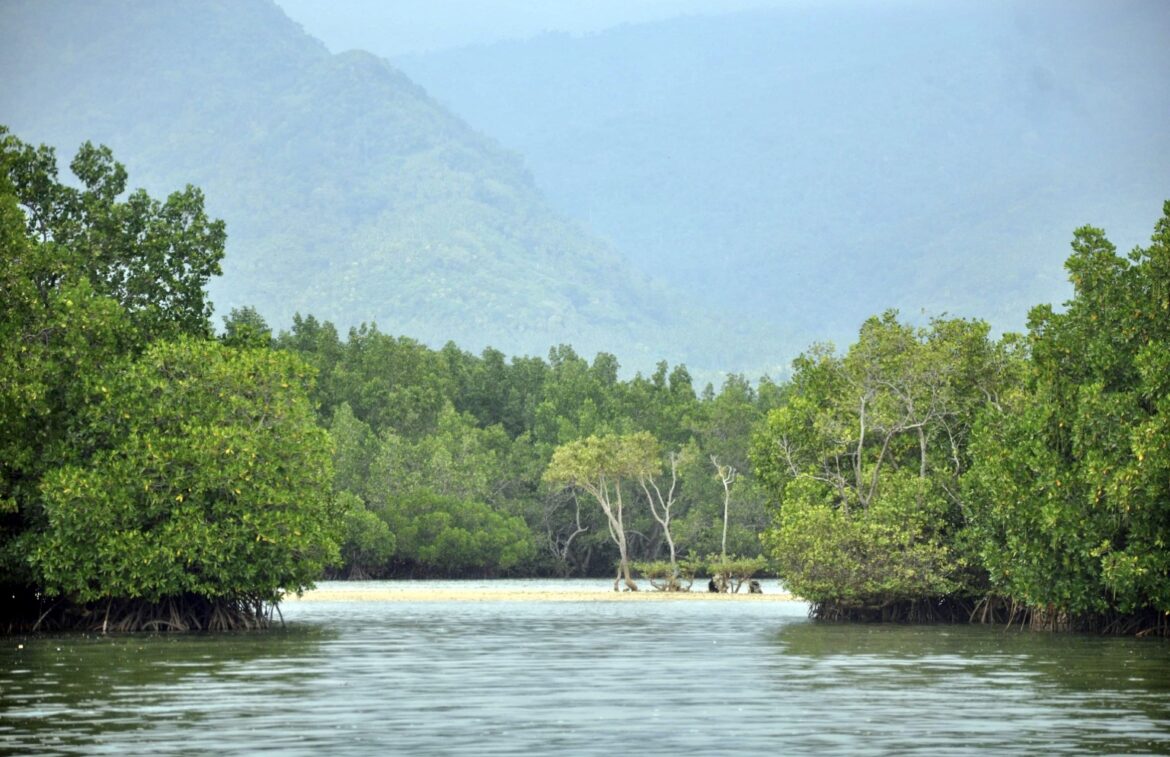Text by Henrylito D. Tacio
Photos by Julius R. Paner
Mindanao, the country’s second-largest island, has three oldest municipalities: one is in Zamboanga (founded by Spanish forces in 1635), while two others are located in Davao Region.
Caraga, in Davao Oriental, was officially founded as a town in 1861. The word “Caraga” originated from the native word “kalag,” which means “spirit of soul.” As a municipality, however, it was chartered on July 15, 1903.
Santa Cruz, in Davao del Sur, was founded on October 5, 1884, thus becoming the second oldest municipality of undivided Davao. But before that, Spanish pioneers and missionaries attempted to settle and tried to Christianize the people in the area as early as 1880.
How the town got its name is an interesting story in itself. “Because of the relentless Islamic faith of the local people in the area,” Wikipedia reported, “the enraged pioneers and missionaries planted a cross under a shelter to mark the failure of the missionaries to convert these people to Christianity; the town’s name now bears the name of the cross planted by those Spaniards.”
Santa Cruz is the Spanish word for “holy cross.”
In the 1960s, a new town was supposed to be carved out from Santa Cruz. Roxas, the supposed municipality, was composed of the present-day barangays of Inawayan, Darong, Astorga, Coronon, and Sibulan. But it didn’t push through. “The Supreme Court of the Philippines nullified the creation of the municipality since this meant the collapse of the jurisdiction of once the most Christianized town in Mindanao,” Wikipedia noted.
This coming October 5, Santa Cruz will celebrate its 136 years of existence as a municipality. “For now, our local authorities have not yet decided regarding the celebration because of the pandemic,” says Julius R. Paner, referring to the coronavirus disease 2019 (COVID-19).
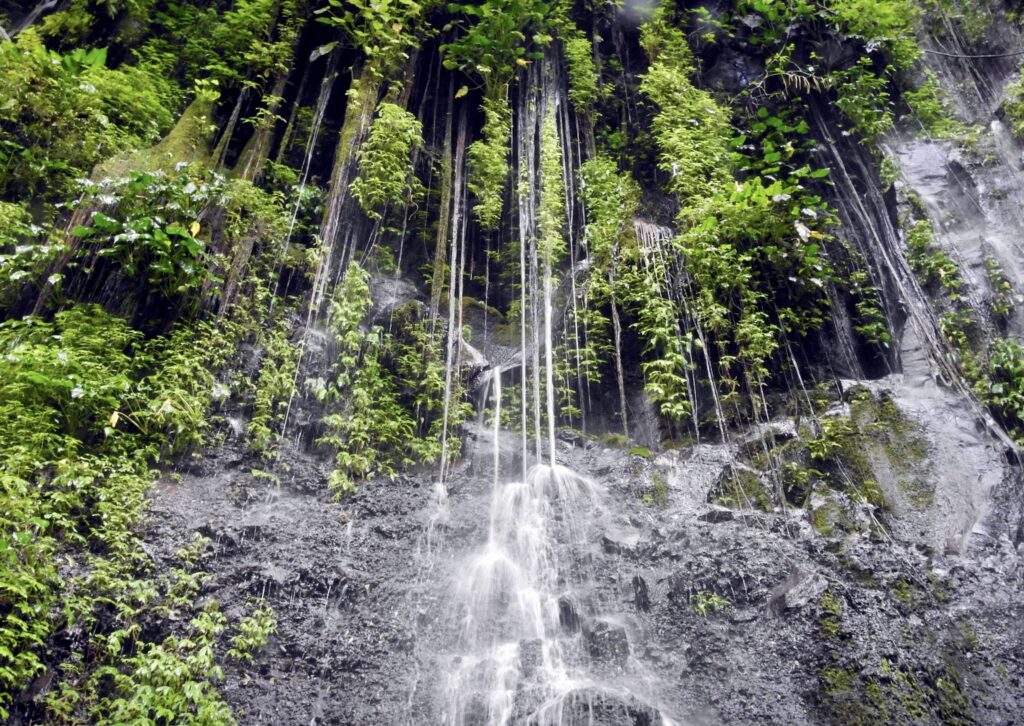
Sinoron Bagon Spring 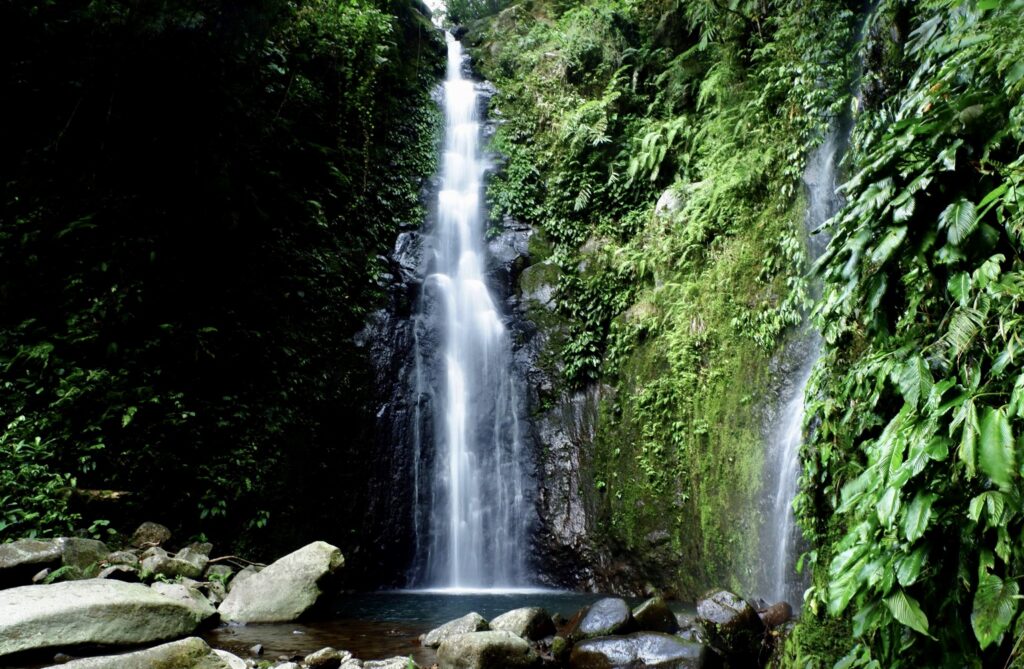
Tacub Laya Falls
“Maybe, it will be very simple, no big gatherings and events, and maybe some sort of virtual activities will be undertaken,” Paner, who is the municipal tourism officer, says, adding that the local government unit will give more weight to following the pandemic safety measures.
“We will always abide with the guidelines imposed by the Department of Health and Inter-Agency Task Force,” he points out.
Santa Cruz may be an old municipality, but it has a lot to offer when it comes to people who come to visit the place. “Rich biodiversity and culture – these have been the two other good features of Santa Cruz other than history,” Paner says.
If you are interested in biodiversity, try to visit the Tagabuli Bird Sanctuary, where you can watch up-close black-crowned night heron and assorted wetlands migratory birds. The Sodaco Farms and Orchidarium are touted to have the largest orchidarium of waling-waling (the country’s second flower icon).
The town has several mountains with caves. For tourism purposes, Paner suggests the Salicudon, a Class 2 cave, which means it is suited for ecotourism, although there are portions that are restricted for spelunking purposes. “(This) cave is a lot better compared to other caves because of its proximity to the town proper and is very accessible,” he explains.
These mountains have some beautiful waterfalls. The Sinoron has a series of waterfalls named Tacub Laya, Dumagok, and Sig’gawak Kasisi. All these are good sites for trekking and forest bathing. The Legal Falls (which can be accessed via a paved road from Coronon) serves as an exit point for Mount Loay traverse seekers. “All the cold waters from these waterfalls emanate from the Mount Apo Natural Park,” Paner says.
Mount Loay, by the way, is a minor hiking destination nestled within the mountain range of Barangay Zone 2. Situated 1,040 meters above sea level, its summit offers a 360-degree view of the entire landscape of Santa Cruz and the huge Davao Gulf.
If your thing is mountain climbing, however, you can follow the Sibulan trail going to Mount Apo, the country’s highest peak. While trekking up, you get to rediscover the trail that hosted the very first accent in 1880 by a group led by Don Joaquin Rajal, featuring the iconic Boulder Face, mystical Tinikaran trees, and the breathtaking Dead Crater Lake.
From the mountains, let’s go down to the seas. Santa Cruz is known for its seascape tour. “Island hopping tour is god for around 2-4 hours,” Paner says. “The attractions include Passig Islet in Bato, Secret Island (a searock garden) and fish cages in Tagabuli, and mangrove forests (located in Bato, Tagabuli, and Tuban), among others.”
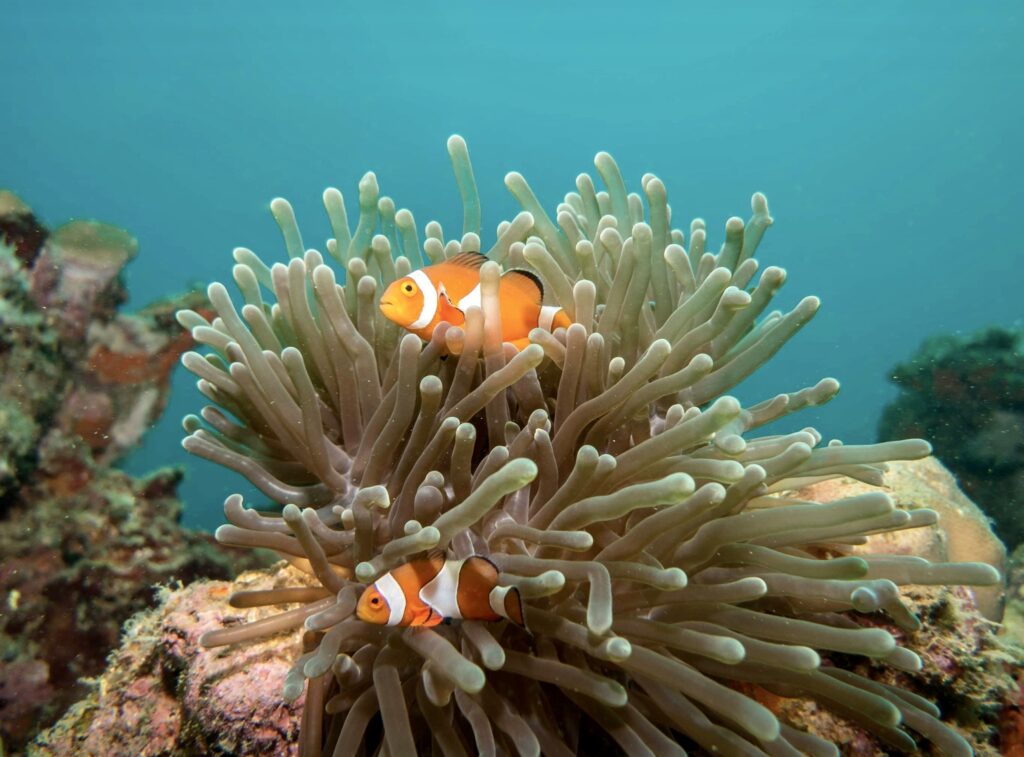
Bato-Tagaytay Reef Sanctuary 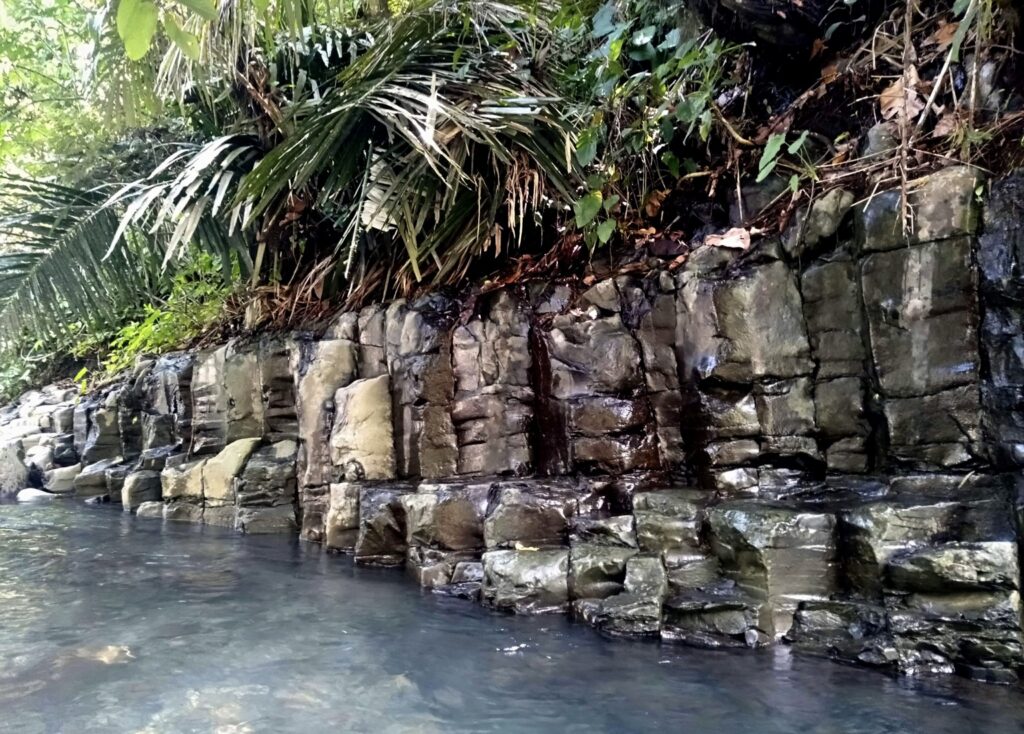
Sinoron rock formation
Options activities in fish cages are observation on fish culture projects and fish feeding. The start/finish point of the island hopping is in barangay Bato.
One good area to visit is the Bato-Tagaytay Reef Fish Sanctuary. “(It) is a good site for scuba diving and snorkeling,” Paner says.
Not be missed when visiting Santa Cruz: Cultural Village. “(This) is a flagship project on cultural tourism,” Paner explains. “It is a living museum where you can witness how the Bagobo-Tagabawa tribe existed and survived over the years in the foothills of Mount Apo’s ancestral domain. So far, it is one of the most successful community-based cultural tourism destinations in Region XI.”
Perhaps, once the pandemic is over, visitors can also witness some of the town’s events and festivals. Aside from the town’s foundation (Araw ng Santa Cruz), it also celebrates Panagdayag Festival (every fourth Saturday of January as an expression of gratitude and unity among its people), Pista sa Kinaiyahan (every month of April as a tribute to Mother Nature), and Sinabaddan Festival (every September as a showcase of tribal ritual, songs, and dances).
Santa Cruz is also known for its people who are recognized not only in Davao but also nationally and internationally. At least two personalities became senators: Alejandro Almendras, Sr. and Ronald “Bato” dela Rosa.
Marilou Bendigo was a former Mutya ng Pilipinas who later ventured into acting. Other beauty titlists are Elisha Libres (Miss Mellinial 2019) and Christine Cadiz (who vied for Miss Earth).
Sports personalities who made a name for themselves include boxing phenomenon Nesthy Petecio (a gold medalist at the 2019 AIBA Women’s World Boxing Championships) and taekwondo champion Clark Sacay (an NCAA Season Medalist of Speed Kicking Senior Male Heavy Division).
Among the noted journalists from Santa Cruz include Lynda Jumilla-Abalos (executive editor and head of News Digital ABS-CBN), Elric Ayop (formerly of ABS-CBN Davao), and Real O. Sorroche (of GMA News Davao).
Other famous personalities also include Erwin “Pastor” Emata (the second Filipino to reach the peak of Mount Everest, the highest mountain in the world) and Edwin “Buboy” Dinapo (an actor and visual artist known for his “Mother and Child” series).
“I’d like to invite everyone to consider Santa Cruz your next stop for adventure and cultural experience,” Paner urges. “We are open for tourists as long as the protocols on COVID-19 will be strictly followed.”
If you want to spend more than a day in the town, you can stay in any of the following: Four Jewels Pension House, MGL Resthouse and Foodhouse, VRC Pension House and Restaurant, and Balay ni Nonoy Pension House.
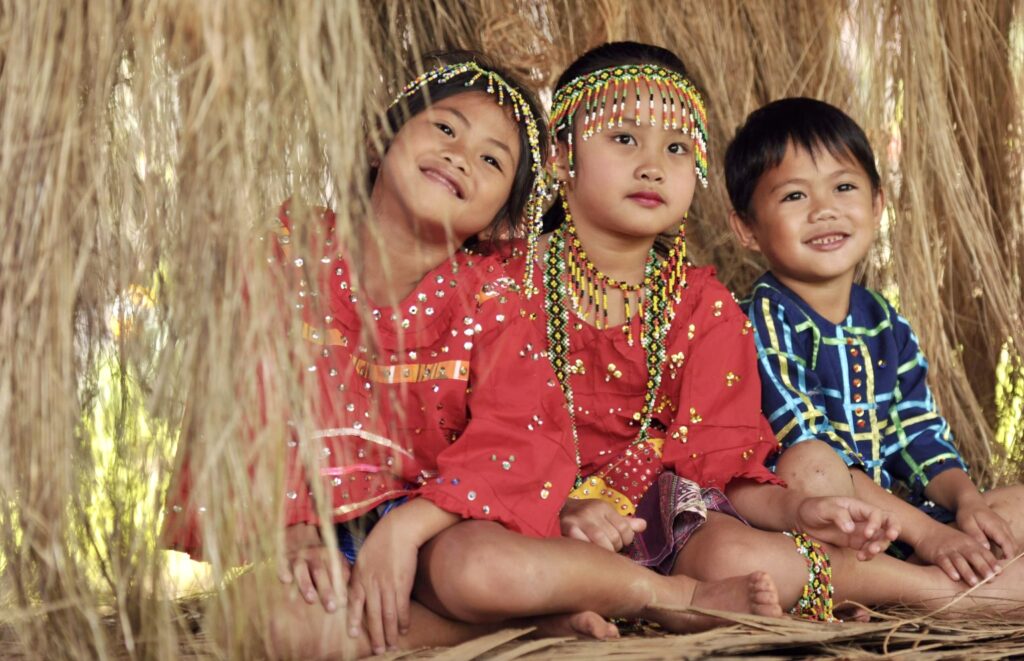
Bagobo Cultural Village
Among the places, you can dine in include Tabing Dagat Resto Bar, Nanay Soting’s Restaurant, Dolly’s House of Seafoods, Jannah Avenue Muslim Restaurant, Salu-Sal Ila Myles, Henry’s Place, Jajaz Pabs, and Bernadette Resto.
Santa Cruz is accessible by land transportation vehicles plying the Davao-Digos City routes. From Davao City, it is 38 kilometers away within an hour’s ride. It is 16 kilometers away or about a 30-minute ride from Digos City.
Only tricycles operate in the town’s center and in neighboring barangays. You can also hire motorbikes when going to some tourist destinations. Kindly coordinate with the tourism office before venturing to distant places.

